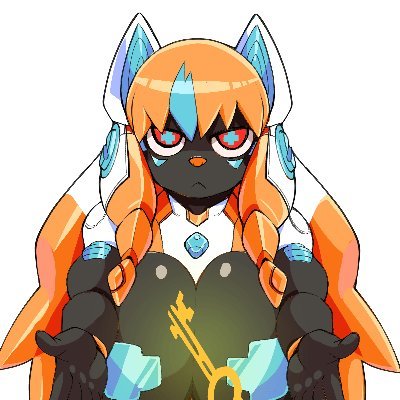The internet has long been a haven for creative communities to connect, share, and enjoy various forms of art. Among these niche communities lies Kemono Party—a platform that has garnered attention for its unique purpose and functionality.
For those unfamiliar, Kemono Party is an aggregator that collects and hosts content from popular subscription-based platforms like Patreon, Fanbox, and others. The site has sparked widespread discussion among creators, supporters, and internet users due to its controversial approach to providing free access to exclusive content.
Kemono Party represents a complex intersection of fandom culture, creator rights, and digital ethics. Understanding its appeal requires diving into its origins, how it operates, and the debates it continues to fuel.
Whether you’re curious about its impact on creators or its role within online communities, this guide aims to provide an insightful look into the world of Kemono Party and what it represents in today’s digital landscape.
What is a Kemono Party?
Kemono Party is an online platform designed to share exclusive content from paid subscription platforms without the need for direct subscriptions. It functions as a repository where users can upload and access posts, images, videos, and other content originally meant for paying supporters.
- Origins and Purpose: The platform started as a response to the rise of paywalled creative content. It gained traction among users seeking free access to artwork, tutorials, and other exclusives that would typically require a subscription.
- How It Works: Users anonymously upload content from paid platforms like Patreon or Fanbox, making it accessible to anyone browsing Kemono Party. The site is user-driven, relying on community contributions to maintain its repository.
- User Base: While some users appreciate the accessibility, others see it as a controversial tool that undermines creators’ efforts to monetize their work.
Features of Kemono Party
Kemono Party provides several features that appeal to its user base, including its straightforward interface and access to a wide variety of content.
a. Easy Navigation
The website is designed to be user-friendly, allowing visitors to quickly search for specific creators or content categories. Its search bar and filtering options make it easy to find posts across different platforms.
b. Diverse Content Categories
Content on Kemono Party spans various genres, including art, music, tutorials, and written works. This diversity attracts a wide audience with varied interests.
c. Anonymity for Uploaders
The platform prioritizes user anonymity, which encourages contributions but also raises ethical concerns. Users can upload content without revealing their identity, making it difficult to track the origins of the uploads.
d. Multilingual Support
Kemono Party supports multiple languages, broadening its appeal to global users. This feature makes it accessible to non-English-speaking communities.
Ethical Implications
Kemono Party has sparked intense debates about the ethicality of its existence and operations. While some users view it as a means to democratize access to creative content, others see it as a blatant infringement on creator rights.
a. Impact on Creators
- Revenue Loss: Creators often rely on platforms like Patreon and Fanbox for income. Kemono Party undermines this by making exclusive content freely available.
- Demotivation: Many creators feel discouraged when their hard work is shared without permission, leading some to reduce or stop creating altogether.
b. The Piracy Debate
Kemono Party operates in a legal gray area similar to other piracy websites. While it doesn’t host copyrighted material directly, it facilitates the sharing of such content, making it a contentious topic in the creative community.
c. Supporter Dynamics
For supporters who genuinely want to back creators, Kemono Party poses a dilemma. While it offers a way to preview content, it can also detract from the sense of exclusivity tied to being a paying member.
Legal Challenges and Responses
Kemono Party’s operations raise numerous legal questions. While the site hasn’t been taken down, it faces ongoing scrutiny from affected parties.
a. Terms of Service Violations
Platforms like Patreon and Fanbox explicitly prohibit the redistribution of paid content. Kemono Party directly violates these terms, making it a target for takedown efforts.
b. DMCA Requests
Creators and platforms often submit DMCA (Digital Millennium Copyright Act) takedown notices to remove infringing content. However, Kemono Party’s reliance on anonymity and decentralized contributions makes enforcement challenging.
c. Potential Legal Outcomes
Although similar platforms have faced legal action, Kemono Party’s longevity highlights the difficulties in policing such sites. The lack of centralized ownership further complicates matters.
The Community Perspective
Kemono Party’s existence has divided online communities. Understanding these perspectives provides a clearer picture of its impact.
a. Supporters of Kemono Party
- Accessibility Advocates: Some users believe that creative content should be freely available to everyone, especially for those who can’t afford subscriptions.
- Archival Enthusiasts: Others argue that Kemono Party preserves content that might otherwise be lost if creators delete or remove posts.
b. Critics of Kemono Party
- Creators and Advocates: Many view the platform as exploitative, harming independent creators who depend on their subscribers.
- Ethical Consumers: Paying supporters often criticize the platform for devaluing exclusive content and breaching trust between creators and their audience.
Alternatives to Kemono Party
For those seeking legitimate ways to access creative content, several alternatives exist that respect creators’ rights:
a. Pay-What-You-Can Models
Some creators offer flexible pricing tiers or donation-based models, making their work accessible without compromising their income.
b. Free Previews and Public Posts
Many platforms allow creators to share previews or public posts alongside their exclusive content, providing a balance between accessibility and exclusivity.
c. Community Engagement
Engaging directly with creators through comments, feedback, and community discussions can provide value beyond the content itself, fostering a stronger connection.
The Future of Kemono Party and Digital Content
The controversy surrounding Kemono Party underscores broader issues within the digital content ecosystem.
a. The Rise of Paywalled Content
As more creators turn to subscription-based models, the demand for platforms like Kemono Party may continue to grow. Addressing this requires balancing accessibility with fair compensation.
b. Strengthening Creator-Platform Relationships
Platforms like Patreon and Fanbox must innovate to provide better protection for creators while ensuring that supporters feel valued.
c. Evolving Legal Frameworks
Future regulations may address the gaps that allow sites like Kemono Party to operate, ensuring a more equitable environment for creators and consumers alike.
Conclusion
Kemono Party represents a contentious chapter in the world of digital creativity. While it offers free access to exclusive content, it raises significant ethical and legal concerns that cannot be ignored. For creators, supporters, and platforms, the platform highlights the need for a more sustainable approach to monetizing and sharing creative work.
By understanding the nuances of Kemono Party, we can engage in more informed discussions about the value of creative content, the rights of creators, and the responsibilities of consumers. In the ever-evolving digital landscape, fostering a culture of respect and fairness remains the key to supporting artistic expression.


